What We’re Reading: As I Descended
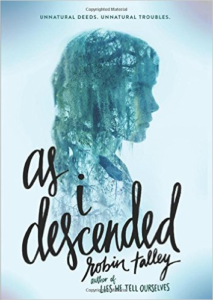 As I Descended by Robin Talley (Harper Teen, September 2016)
As I Descended by Robin Talley (Harper Teen, September 2016)
I have a longstanding theory that all literature, movies, and media can be improved by adding lesbians. Dante’s Inferno? Would be better with lesbians. Citizen Kane? Better with lesbians. Space Jam? Better with lesbians. Heck, I’d probably finally read David Foster Wallace if he added in some lesbians. As a self-identified Shakespeare nerd, you can only imagine my excitement when I discovered Robin Talley’s As I Descended, a retelling of Macbeth set in a boarding school where both M and Lady M are teenage girls.
The curtain opens on Maria Lyon and Lily Boiten, Acheron Academy’s resident power couple. It’s the girls’ senior year, and there’s only one thing standing in the way of their post-graduation happily ever after: the distinguished Kingsley Cawdor Scholarship. Whoever wins is guaranteed a free ride to any college in the country, and it’s the one thing Maria needs to lock in her Stanford acceptance. But the Kingsley Cawdor Scholarship is all but promised to golden child Delilah Dufrey. When Maria and Lily ask a Ouija board to take Delilah out of the picture, they get much more than they bargained for.
Retellings of classic tales are always finicky creatures. Stay too close to the original, and the writing can feel lazy, more plagiarism than homage. Stray too far, however, and the source material can become unrecognizable, at which point it seems useless and gimmicky to call it a retelling at all. As I Descended hits that sweet spot right in the middle. It’s a unique enough take to make it a fresh, exciting read, but contains enough references to Macbeth that the reader (if familiar with Shakespeare) feels like they’re being let in on an inside joke. The rival soccer team is called “Birnham.” All of the chapter headings are quotes from the play. After (spoiler alert) Delilah Dufrey mysteriously falls from a window, Lily even has a delicious “out, damn spot!” monologue.
The deviations from the original script (as is true with all good retellings) ended up being some of my favorite aspects of the book. There’s the genderbending of Macbeth to Maria, of course, which Talley turned into a study of female ambition that we don’t often see in young adult lit. Maria is also Latina in this version, and Talley beautifully weaves in Mexican folklore, turning the infamous three witches into the legendary and terrifying figure of La Llorona. The rest of the cast is diverse as well; Lily is disabled, MacDuff is Latino, and the MacDuffs are also a gay couple. There’s no reason for any of these “diverse elements” to exist, which makes it all the more perfect. Talley has simply updated an all-white, all-straight, predominantly-male cast to reflect what real communities actually look like.
The other main change is one that may divide readers, but which I absolutely loved. In the original Macbeth (depending on which English professor you listen to), there are supernatural forces at work, but the reader never knows exactly how much of a role they play. Is Macbeth really haunted by Banquo’s ghost, or is he just consumed by guilt? Is there really spectral blood on Lady Macbeth’s hands, or is she simply mad? Did the soldiers really disguise themselves as trees in the end and think that was a good war strategy, I mean, really, Shakespeare? Really?? Regardless, the ambiguity, some argue, allows for a more nuanced discussion of character and how far people will go to attain their heart’s desire. In As I Descended, Talley does away with this ambiguity altogether in favor of a spookier conclusion: there are ghosts at work at Acheron Academy, and the tragedy that results is almost entirely their fault. The ghosts push Delilah out of the window. The ghosts provide an unseen force which kills Brandon (our Lady MacDuff). The ghosts drive Lily to drown herself. I love a good horror novel, and to me supernatural thrillers are just as satisfying as psychological ones, so I had no qualms with Talley taking artistic license in this direction.
In conclusion, Talley worked this retelling masterfully. If she decided to rewrite the entire Shakespearean canon with contemporary (and queer) themes, I would devour each and every book. (Hint, hint, Robin Talley, if you’re reading this.)
Have you read any good retellings lately?
What We’re Reading: February Round-Up

This post contains political opinions. This is not an apology; this is a declaration.
The new presidency has left many people heartbroken, angry, anxious, and fearful. Thanks to the new president and his administration, the list of jeopardized peoples and rights continues to grow: people of color, LGBTQ communities, women, immigrants, the environment, the arts, science, the freedom to protest, reproductive rights, health care, journalism, freedom of speech…the list goes on with astounding horror.
Climbing out of the anxiety-ridden horror of these acts is difficult but necessary. Contact your political representatives to let them know how you feel. Listen. Stand up for others. Expose yourself to opinions and communities outside of your own. Have difficult conversations. Support the organizations you care about, whether it be by donating, volunteering, and/or advocating.
Today’s staff round-up features a wide array of voices and stories (which we strive to do with all of our round-ups). We think these books can create empathy, challenge perspectives, open minds, inspire action, and build connections. This is the power of books. We’d love to hear about the ones you’re reading, too.
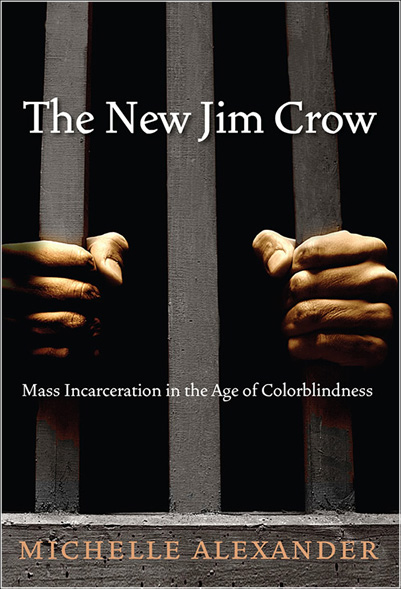 The New Jim Crow: Mass Incarceration in the Age of Colorblindness by Michelle Alexander (The New Press, 2010)
The New Jim Crow: Mass Incarceration in the Age of Colorblindness by Michelle Alexander (The New Press, 2010)
Reviewed by Taylor
You might already be aware of some flaws in our criminal justice system: overworked public defenders, militarized police forces, and the three-strikes law, which imprisons even nonviolent offenders for life, but there is so much more injustice to uncover. In The New Jim Crow, civil rights advocate and law professor Michelle Alexander shows how police tactics, harsh sentencing, and shocking Supreme Court rulings work together to legalize racial discrimination under the guise of being “tough on crime.”
Referring to a famous birdcage metaphor, Alexander writes, “If one thinks about racism by examining only one wire of the cage, or one form of disadvantage, it is difficult to understand how and why the bird is trapped. Only a large number of wires arranged in a specific way, and connected to one another, serve to enclose the bird and to ensure that it cannot escape… Any given wire of the cage may or may not be specifically developed for the purpose of trapping the bird, yet it still operates (together with the other wires) to restrict its freedom.”
Scrutinizing that bird cage one wire at a time, you can see parallels to Jim Crow and slavery. Whether intentional or not, mass incarceration is our country’s latest way to legally discriminate against and revoke the rights of black Americans, especially young black men disproportionately targeted in the War on Drugs (despite not being any more likely to commit a nonviolent drug offense than their white counterparts), then slapped with a felony conviction, making it legal to deny them jobs, housing, education, public benefits, jury service, even the right to vote for their own lawmakers. This infuriating history lesson, conversation starter, and radical call to action is required reading in 2017.
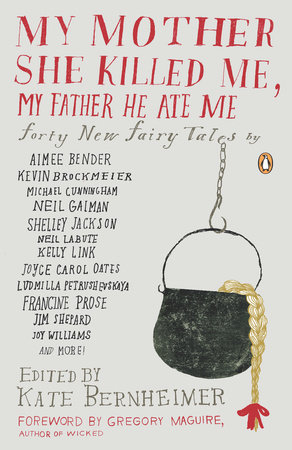 My Mother She Killed Me, My Father He Ate Me by Kate Bernheimer (Penguin Random House, 2010)
My Mother She Killed Me, My Father He Ate Me by Kate Bernheimer (Penguin Random House, 2010)
Reviewed by Josh
This month I’m finishing up something new and starting something old! I have a few more stories to read in Kate Bernheimer’s collection of new fairy tales, My Mother She Killed Me, My Father He Ate Me. The stories I’ve read so far have been fantastic: a story about Baba Yaga by Joy Williams, a reworking of Rumpelstiltskin by Kevin Brockmeier, and many, many more (40, actually!). The stories are reworkings of fairy tales from all over the world by authors all over the world. Once I’ve finished Bernheimer’s collection, I’m going to read Aldo Leopold’s 1949 book A Sand County Almanac, both because I’ve been feeling a little distance from nature these days and because (relatedly, probably!) I want to remember the world beyond winter. I love the cold beauty of winter, but I’m also looking forward to the grubby gardening of summer.
 Ascension by Jacqueline Koyanagi (Prime Books, December 2013)
Ascension by Jacqueline Koyanagi (Prime Books, December 2013)
Reviewed by Cassidy
I don’t know about y’all, but my typical go-to distractions (Facebook, Twitter, and even Instagram) have recently turned into a Vortex of Anxiety, overridden by terrifying headlines, personal stories of discrimination, and, of course, internet trolls. Don’t get me wrong—I try my best to stay informed, but sometimes I need a break from it all. Enter Ascension by Jacqueline Koyanagi. It’s chock-full of all of my favorite things—space, magic, and Gay Shit™—and contains so much diversity that reading it feels like waving a giant middle finger at POTUS. The story centers on Alana Quick, a sky surgeon who stows away on a starship and quickly gets more than she bargains for. The chief engineer thinks he’s a wolf, the pilot fades in and out of existence, and Alana can’t keep her eyes off of the smug (and all-too-gorgeous) captain. But beyond that, Alana soon learns that there are even larger forces at work—forces that threaten not just the starship but the entire galaxy. You want representation? This book’s got it. Ascension has complex, developed representation the likes of which I’ve literally never seen before. Characters of color. Queer and polyamorous characters. Characters who deal with chronic pain and mental illness.
 Hawkeye by Kelly Thompson, Leonardo Romero, and Jordie Bellaire (Marvel, 2016)
Hawkeye by Kelly Thompson, Leonardo Romero, and Jordie Bellaire (Marvel, 2016)
Reviewed by Aaron
Hawkeye stars Kate Bishop, previously co-star of Young Avengers and an earlier volume of Hawkeye. Now she’s the sole star, moved to LA to pursue a career in private investigation. Hawkeye is visually unique and distinctive; spreads and panels are often drawn in a sort of “Hawkeye vision” with translucent bullseyes hovering over key parts of the scene, whether those key parts are bad guys or nice abs. Unfortunately, the story doesn’t quite keep up with the visuals. Kate, who has previously been shown as competent and mature (often in contrast to her less competent and/or less mature co-stars) comes off sounding a bit dumb and stifled.
This “narrative” has Kate tracking a cyber-stalker on a college campus, which seems like a good narrative for a vigilante. When I’ve heard about people being stalked and harassed online, police often say that they’re powerless. Time for a cool, extra-legal superhero to step in! But the story steps square into one of my least favorite fantasy tropes: the bad guy is doing bad things because he’s being mind-controlled. Superheroes work a lot of the time because they’re relatable—their problems are ours, but the barriers are exaggerated. Spider-Man needs money to pay his rent, but the Green Goblin is in the way. Captain America has PTSD, but he also has to stop a super-Nazi. This reflects (for me, at least) how dealing with things when we’re stressed, in mourning, or overwhelmed, can seem huge and impossible.
But by yoking a real-world problem (stalking) with a fantastical source (mind-control), the rhythm of the story can start to feel muddied. Are the stalkers not to blame? Is mind control a metaphor for, like, the online spaces where white men are radicalized? Does defeating the source of the mind control end bullying?
To be fair, only two chapters of this newest volume have been released. Everything could be made clear before the story’s end. You still have time to find out for yourself!
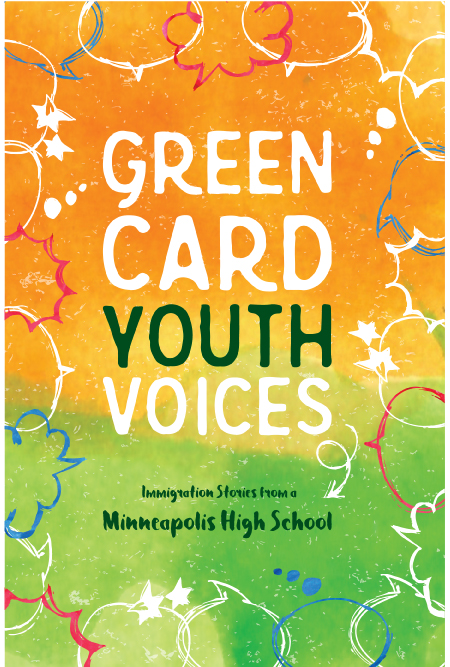 Green Card Youth Voices: Immigration Stories from a Minneapolis High School by 30 Wellstone International High School students (Green Card Voices, 2016)
Green Card Youth Voices: Immigration Stories from a Minneapolis High School by 30 Wellstone International High School students (Green Card Voices, 2016)
Reviewed by Wren
Green Card Voices is a nonprofit organization based in Minneapolis that gathers stories from recent immigrants to the U.S., and shares them via videos on their website. Their youth branch does this same thing, but goes a step further to publish youth immigrant stories in a book as well. This Minneapolis edition is their first book, although they are now working on a book from Fargo, MN students, and a third from St. Paul students. (Stay tuned for a Writing Life post soon, from a conversation I had with Tea and a few students who will be featured in the St. Paul essay collection.)
With Trump’s recent ban on immigration, I find it ever more important to put faces and personal stories to the national dialogue around immigration. When you read this book, or listen to immigrant stories online, you learn how much of a struggle it often is to get to the U.S., and how that continues as one lives here. You hear about families having to live oceans apart, without knowing when they’ll be able to see each other again. You learn about the terror many immigrants have faced in their origin countries, and how they have come to the U.S. in search of safety, better education, and opportunities. Reading these stories creates compassion and empathy for families searching for refuge. There are 30 essays written by students from 13 different countries, including some of the countries that Trump has targeted with his immigration ban.
After recording their video stories, the high school students work with college students to turn the video transcripts into personal essays. Tea asks the editors to largely leave the narratives from the students in their own voice—to not attempt to make the personal essays more “literary,” at the cost of the personal voice of the student. As Tea told me, this is so you can listen with your heart, rather than just your brain. I encourage you to read these stories as such: one human, connecting to another human.
What We’re Reading: January Round-Up
 It’s 2017, and with the new year comes the guilt-laden media: articles on how to keep resolutions, get fit, and fix x, y, or z about yourself. I say forget all that, and instead, focus on doing things that fulfill you. For me, two of the most fulfilling activities are reading and writing (no surprises there, I’m sure). Reading should be fun and something you do for yourself. If reading is something you hope focus on in the new year, here are some books that might pique your readerly appetite. There’s no pressure here, no results requested, and no one is holding you accountable. All we ask is that you read for fulfillment, for fun and joy, for creative nourishment. Behold, the January 2017 staff round-up!
It’s 2017, and with the new year comes the guilt-laden media: articles on how to keep resolutions, get fit, and fix x, y, or z about yourself. I say forget all that, and instead, focus on doing things that fulfill you. For me, two of the most fulfilling activities are reading and writing (no surprises there, I’m sure). Reading should be fun and something you do for yourself. If reading is something you hope focus on in the new year, here are some books that might pique your readerly appetite. There’s no pressure here, no results requested, and no one is holding you accountable. All we ask is that you read for fulfillment, for fun and joy, for creative nourishment. Behold, the January 2017 staff round-up!
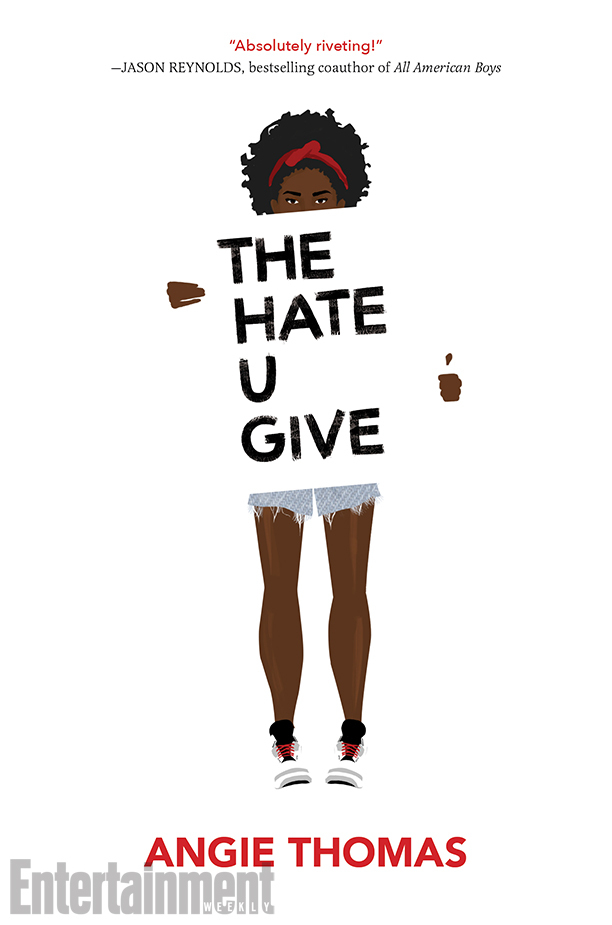 The Hate U Give by Angie Thomas (Balzer + Bray, February 2017)
The Hate U Give by Angie Thomas (Balzer + Bray, February 2017)
Previewed by Cassidy
There are dozens of YA books I’m hype about in 2017, but The Hate U Give by Angie Thomas is possibly the most urgent and necessary of them all. The book centers around sixteen-year-old Starr Carter, who has to balance who she is at home in a poor neighborhood with who she is at her wealthy suburban prep school. When Starr witnesses the fatal police shooting of her childhood best friend, Khalil, the world she knows is thrown into chaos. As protests and movements build around Khalil’s death, everyone turns to Starr to find out just what happened last night. Based on the Black Lives Matter movement, this book asks all of the right (and all-too-real) questions. You can find it in stores on February 28, but TBH you should probably just pre-order it now.
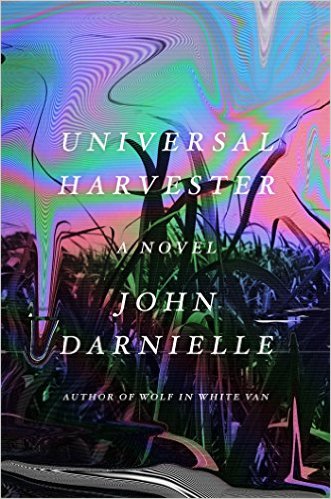 Universal Harvester by John Darnielle (Farrar, Straus and Giroux, 2017)
Universal Harvester by John Darnielle (Farrar, Straus and Giroux, 2017)
Reviewed by Aaron
Darnielle’s Universal Harvester starts with the last days of a Video Hut in Nevada, Iowa. While partially billed as a horror novel (and while it’s certainly unsettling at times), the most touching aspect of the book is the way the characters navigate the social mores of the rural Midwest. Their navigation of the typical tracks their conversations take—the conversational fences that make good neighbors—leads to almost as much tension as the purposefully horrific subplot.
Aspects of video tape culture, obviously on its way out in the early aughts, carry the structure of the novel. The horror plot centers around strange footage edited into rental movies. Meanwhile, parts of the book seem spliced or recorded over, and there are times when I wish I could adjust the tracking to get a clearer picture. Information is coyly doled out like in Midwestern small talk; the narrative makes skittering jumps as though a piece of film were left on the cutting room floor; and confusing imagery is left to writhe on the page, forcing the reader to create an image out of static.
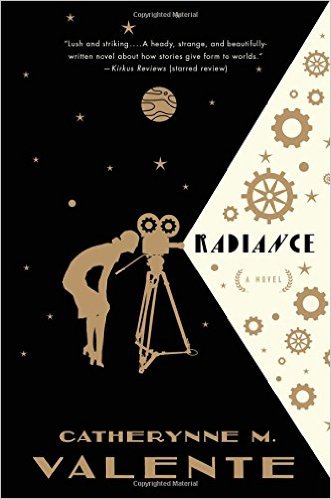 Radiance by Catherynne Valente (Tom Doherty Associates, LLC, 2015)
Radiance by Catherynne Valente (Tom Doherty Associates, LLC, 2015)
Previewed by Josh
You might know Catherynne Valente from any of the Fairyland books (which feature prose lush enough to make mouths water and hack writers sweat) or her short fiction (which has appeared in appropriately wonderful magazines like Uncanny or Beneath Ceaseless Skies). Maybe you’ve read her essays or follow her on Twitter, or possibly you’ve made bad life choices up until this moment and haven’t engaged with any of Valente’s work up until this point. I’ve read only one of Valente’s books and a few of her short stories, and they’ve all made me incredibly excited for her newest book, Radiance, which is an alt-history SF space opera written in a formally experimental prose style. It follows a filmmaker rebelling against her father (another filmmaker) by shooting daring documentaries across the solar system, which is populated by alien races pulled straight from classic science fiction. It sounds like a treatment of the genre and of various prose forms, but if I know anything about Valente’s writing, there will also be a beautiful, moving, powerful story nestled in amongst the experimentation.
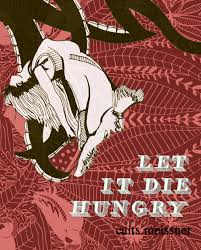 Let It Die Hungry by Caits Meissner (The Operating System, October 2016)
Let It Die Hungry by Caits Meissner (The Operating System, October 2016)
Reviewed by Wren
This is a fascinating collection that captured my imagination immediately with its multi-pronged approach. Caits Meissner fuses poetry, prose, prompts, and comic panels to address an endless curiosity and appetite for getting messy (in the best way). The book reminded me of a personal mantra of mine: clarity over certainty. If you’re looking for certainty, you’re bound to find the unexpected and get anxious about the results not matching up (kind of like those resolutions I was talking about earlier). But if you’re pursuing clarity instead, you can acknowledge all of the curious pieces of a thing, and let it sit in it’s beautiful, steaming, sloppy self, and find freedom in that. In fact, there are writing prompts in Let It Die Hungry that ask a series of questions that get to that very point of clarity of self, such as “A time you fit in or stood out that felt purposeful and deeply chosen. What agency did you have? What made you feel powerful, loudly or quietly, about the choice?” The poetry within takes on a conversational tone, yet with a strong and urgent sense of voice. All of it is infused with sensual, bodily language. This is a collection I could (and plan to) read multiple times to really catch all the beautiful and messy clarity oozing from each page.
Happy new year, dear readers.
What We’re Reading: Three Parts Dead

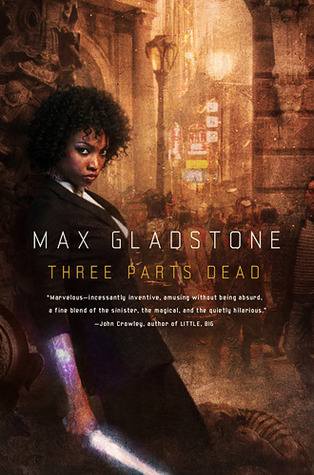 Three Parts Dead by Max Gladstone (Tor, 2012)
Three Parts Dead by Max Gladstone (Tor, 2012)
Max Gladstone’s debut novel Three Parts Dead doesn’t have a fantastic title. It sounds pulpy to the max (and this is coming from a great lover of pulp) with a dash of vagueness tossed in for good measure. It’s the kind of line someone on CSI: Arbitrary Metro Place might say while pulling down sunglasses. “I’d say this bartender is three parts—*tilts sunglasses*—dead.” And yet, the title is important. Gladstone wrote a nice post over at Tor describing why this and his other novels from the Craft sequence are named the way they are. And it turns a slightly cheeseball title into something charming and fun. Right? Right.
Three Parts Dead is more than anything else fun. I have final papers to grade and a new daughter missing several beats in her circadian rhythm and my own damn book to write and I just wanted something that would pull me in, make me excited to pick it back up, and reward me for investing in the story. And Gladstone’s debut novel does all of that and more.
The story is Tara Abernathy’s, a Craftswoman (a sort of magico-juridical necromancer person) who is thrown out of school, nearly killed, and then given a job working for a high-powered law firm. The case? Investigating the circumstances surrounding a god’s death and resurrecting Him if possible.
But this is also Abelard’s story, a young priest in the church of Kos the Everburning, the recently-dead god whose case (and resurrection) to Whom Tara is assigned.
And it’s also Cat’s story, a woman working as a peace officer (of a sort) and also in search of a high that will distract her from her life. Incidentally, her boss is the goddess Justice, who is a resurrected version of an old god named Seril. It’s complicated. Clearly.
Gladstone uses an omniscient third-person narrator to huge success in this novel, moving from character to character, following the story instead of perceptions of the story. The best moments in this book are when the same action is happening to/in front of/near many of the characters and the perspective moves effortlessly between them, keeping up the pace while adding in additional narrative stimulus. The climax of the story, which I won’t ruin and would probably take some serious time to explain anyway, is like this: strangely multi-perspectival and unified all at once. It’s great.
Three Parts Dead also has this great metaphor of the courtroom and legal troubles as fantastical and magical; it undergirds much of the action and plot in the story, and this way of jazzing up jurisprudence is hugely exciting and fun. About halfway through the novel, Tara and the opposing council present their opening arguments, but the whole thing takes the form of a magical contest held over the imagined (but very real) body of the dead god Kos. It does what fantasy is best at: taking a theoretical conflict and making it literal as a way of better exploring its nature. We see what legal battles are really about here: power, trickery, preparation, and will. It makes for a strangely exciting story about law.
If there are moment where Gladstone stumbles in this book, they are closely linked with how imaginatively his world has been built. Characters will sometimes turn to one another to explain things they both know (or should know) as a way to convey exposition or worldbuilding, and because the plot is tied up in the intricacies of a fantastical law system, Gladstone has to slam on the brakes at times to let us know what’s really going on, what’s really at stake, and what that person really said.
But those moments are few and easily forgotten in the greater genius of the novel. I can’t wait to dive in to the others.
What fun page turners have you been reading recently?






